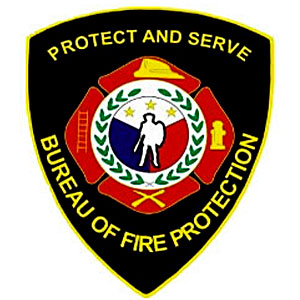Fire prevention month is held in the Philippines every March of each year. Do you know the components of fire prevention and fire protection?
CSupt (DSC) Rodrigo Abrazaldo, director for Fire Safety and Prevention of the Bureau of Fire Protection, defines fire prevention as a course required to avoid or deter fire incidents and reduce their aggravating effects by understanding the basic fire safety procedures. Fire protection is a way of securing the community from the onslaught of fire through the implementation of effective fire prevention activities proposed by the Bureau of Fire Protection (BFP).
BFP Functions
With its role of safeguarding the lives and properties, BFP is tasked to implement the following:
Enforcement of the Fire Code of the Philippines
a. Process and review building plans
b. Strictly implement fire safety inspection of buildings, establishments, structures and facilities covered by the governing law

Fire Safety Awareness Campaign
a. Intensify the BFP’s program on Ugnayan sa Barangay (community collaboration)
b. Organize auxiliary fire brigades in the barangays, including government and non-government organizations
c. Implement the Kiddie Junior Fire Marshall Project

Enhancement of Fire Safety Inspection
a. Conduct fire safety and prevention seminar workshops
b. Attend programs organized by fire safety inspectors in different seminars and lectures related to fire safety and prevention
Bureau’s Challenges
Lack of resources. Since its establishment in 1990, BFP is faced with many challenges like the inadequate or non-availability of serviceable fire trucks neglecting its primary role as a government agency to prevent and suppress fires with damaging effects. Presently, there are 1,809 fire trucks, of which only 1,526 trucks or 84 percent are functional, while the other 293 units or 16 percent need either repair or replacement. In total, only 747 or half of the 1,491 municipalities nationwide are equipped with fire protection preparedness capacity.
Budget constraints. In the past, BFP has been beset by unavailability of funds necessary to strengthen its manpower, facilities and equipment. The Comprehensive Fire Code of the Philippines of 2008 (RA 9514) states that 20 percent of the collections such as taxes, fees, and fines shall be set aside by the concerned city or municipal government to be appropriated with the same exclusively for the use of its operation and maintenance of the local fire station, including the construction and repair of a fire station. The remaining 80 percent shall be remitted to the National Treasury under a trust fund assigned for the modernization of the Bureau.
 Public awareness. Working on the theme, “Fire Safety: A Challenge, Concern, and Priority for Everybody,” the Bureau cited some activities that will help to promote awareness within the community. These include of the use of posters / streamers, dissemination of information materials like comics and leaflets; conduct fire safety seminars and workshops; open house of all fire stations, especially for schoolchildren; and the celebration of the Fire Olympics.
Public awareness. Working on the theme, “Fire Safety: A Challenge, Concern, and Priority for Everybody,” the Bureau cited some activities that will help to promote awareness within the community. These include of the use of posters / streamers, dissemination of information materials like comics and leaflets; conduct fire safety seminars and workshops; open house of all fire stations, especially for schoolchildren; and the celebration of the Fire Olympics.
Security statistics. In February 2009, the BFP has about 15,616 personnel in the country with 953 officers, 14 (182 non-officer ranks), and 481 non-uniformed personnel.
With the objective of meeting the standards, all BFP personnel should undergo a training series that include the Fire Basic Recruit Course for Fire Officer 1 (FO1); Fire Arson Investigation Course (FAIIC); Fire Protection Supervisory Course; the Officer’s Basic Course (OBC); Officer’s Advanced Course (OAC); and the Officer Senior Executive Course (OSEC). •
SIDEBAR
Fire-proofing Yourself
1. Eliminate fire hazards by keeping a good housekeeping regimen. Dispose always waste papers, rubbish, and other flammable materials.
2. Keep matches out of children’s reach.
3. Oil, gas, lamps, and candles should be placed away from the curtains. Put out the flame before going to bed.
4. Do not keep flammable materials like gasoline, alcohol, and paint inside the house.
5. Always check electrical installations, and change all frayed wirings and electrical fixtures or asked a licensed electrician for repair.
6. Avoid overloading of electrical circuits by plugging additional lights and electrical appliances.
7. Blown fuses should not be replaced with wires or any metal.
8. Never leave a lighted cigarette/ cigar / pipe unattended that may fall on flammable materials and start a fire.
9. Always turn off and unplug all electrical appliances.
10. Never leave the gas stove while cooking.
11. Always carry a first-aid kit in the house.






